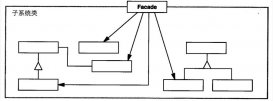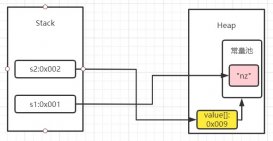1.概述
项目中经常会遇到一个应用需要访问多个数据源的情况,本文介绍在SpringBoot项目中利用SpringDataJpa技术如何支持多个数据库的数据源。
具体的代码参照该 示例项目
2.建立实体类(Entity)
首先,我们创建两个简单的实体类,分别属于两个不同的数据源,用于演示多数据源数据的保存和查询。
Test实体类:
|
1
2
3
4
5
6
7
8
9
10
11
12
13
14
15
16
17
18
19
20
21
22
23
24
25
|
package com.example.demo.test.data;import javax.persistence.Entity;import javax.persistence.Id;import javax.persistence.Table;@Entity@Table(name = "test")public class Test { @Id private Integer id; public Test(){ } public Integer getId() { return this.id; } public void setId(Integer id){ this.id = id; }} |
Other实体类:
|
1
2
3
4
5
6
7
8
9
10
11
12
13
14
15
16
17
18
19
20
21
|
package com.example.demo.other.data;import javax.persistence.Entity;import javax.persistence.Id;import javax.persistence.Table;@Entity@Table(name = "other")public class Other { @Id private Integer id; public Integer getId() { return this.id; } public void setId(Integer id){ this.id = id; }} |
需要注意的是,这两个实体类分属于不同的package,这一点极为重要,spring会根据实体类所属的package来决定用那一个数据源进行操作。
3.建立Repository
分别建立两个实体类对应的Repository,用于进行数据操作。
TestRepository:
|
1
2
3
4
5
6
|
package com.example.demo.test.data;import org.springframework.data.jpa.repository.JpaRepository;public interface TestRepository extends JpaRepository<Test, Integer> {} |
OtherRepository:
|
1
2
3
4
5
6
|
package com.example.demo.other.data;import org.springframework.data.jpa.repository.JpaRepository;public interface OtherRepository extends JpaRepository<Other, Integer> {} |
得益于spring-data-jpa优秀的封装,我们只需创建一个接口,就拥有了对实体类的操作能力。
3.对多数据源进行配置
分别对Test和Other两个实体类配置对应的数据源。配置的内容主要包含三个要素:
- dataSource,数据源的连接信息
- entityManagerFactory,数据处理
- transactionManager,事务管理
Test实体类的数据源配置 TestDataConfig:
|
1
2
3
4
5
6
7
8
9
10
11
12
13
14
15
16
17
18
19
20
21
22
23
24
25
26
27
28
29
30
31
32
33
34
35
36
37
38
39
40
41
42
43
44
45
46
47
48
49
50
51
52
53
54
55
56
57
58
59
|
package com.example.demo.config;import org.springframework.beans.factory.annotation.Autowired;import org.springframework.beans.factory.annotation.Qualifier;import org.springframework.boot.autoconfigure.jdbc.DataSourceBuilder;import org.springframework.boot.autoconfigure.orm.jpa.JpaProperties;import org.springframework.boot.context.properties.ConfigurationProperties;import org.springframework.boot.orm.jpa.EntityManagerFactoryBuilder;import org.springframework.context.annotation.Bean;import org.springframework.context.annotation.Configuration;import org.springframework.context.annotation.Primary;import org.springframework.data.jpa.repository.config.EnableJpaRepositories;import org.springframework.orm.jpa.JpaTransactionManager;import org.springframework.orm.jpa.LocalContainerEntityManagerFactoryBean;import org.springframework.transaction.PlatformTransactionManager;import org.springframework.transaction.annotation.EnableTransactionManagement;import javax.persistence.EntityManagerFactory;import javax.sql.DataSource;@Configuration@EnableTransactionManagement@EnableJpaRepositories( entityManagerFactoryRef = "entityManagerFactory", basePackages = {"com.example.demo.test.data"})public class TestDataConfig { @Autowired private JpaProperties jpaProperties; @Primary @Bean(name = "dataSource") @ConfigurationProperties(prefix = "spring.datasource") public DataSource dataSource() { return DataSourceBuilder.create().build(); } @Primary @Bean(name = "entityManagerFactory") public LocalContainerEntityManagerFactoryBean entityManagerFactory( EntityManagerFactoryBuilder builder, @Qualifier("dataSource") DataSource dataSource) { return builder .dataSource(dataSource) .packages("com.example.demo.test.data") .properties(jpaProperties.getHibernateProperties(dataSource)) .persistenceUnit("test") .build(); } @Primary @Bean(name = "transactionManager") public PlatformTransactionManager transactionManager( @Qualifier("entityManagerFactory") EntityManagerFactory entityManagerFactory) { return new JpaTransactionManager(entityManagerFactory); }} |
代码中的Primary注解表示这是默认数据源。
Other实体类的数据源配置 OtherDataConfig:
|
1
2
3
4
5
6
7
8
9
10
11
12
13
14
15
16
17
18
19
20
21
22
23
24
25
26
27
28
29
30
31
32
33
34
35
36
37
38
39
40
41
42
43
44
45
46
47
48
49
50
51
52
53
54
55
56
|
package com.example.demo.config;import org.springframework.beans.factory.annotation.Autowired;import org.springframework.beans.factory.annotation.Qualifier;import org.springframework.boot.autoconfigure.jdbc.DataSourceBuilder;import org.springframework.boot.autoconfigure.orm.jpa.JpaProperties;import org.springframework.boot.context.properties.ConfigurationProperties;import org.springframework.boot.orm.jpa.EntityManagerFactoryBuilder;import org.springframework.context.annotation.Bean;import org.springframework.context.annotation.Configuration;import org.springframework.data.jpa.repository.config.EnableJpaRepositories;import org.springframework.orm.jpa.JpaTransactionManager;import org.springframework.orm.jpa.LocalContainerEntityManagerFactoryBean;import org.springframework.transaction.PlatformTransactionManager;import org.springframework.transaction.annotation.EnableTransactionManagement;import javax.persistence.EntityManagerFactory;import javax.sql.DataSource;@Configuration@EnableTransactionManagement@EnableJpaRepositories( entityManagerFactoryRef = "otherEntityManagerFactory", transactionManagerRef = "otherTransactionManager", basePackages = {"com.example.demo.other.data"})public class OtherDataConfig { @Autowired private JpaProperties jpaProperties; @Bean(name = "otherDataSource") @ConfigurationProperties(prefix = "other.datasource") public DataSource otherDataSource() { return DataSourceBuilder.create().build(); } @Bean(name = "otherEntityManagerFactory") public LocalContainerEntityManagerFactoryBean otherEntityManagerFactory( EntityManagerFactoryBuilder builder, @Qualifier("otherDataSource") DataSource otherDataSource) { return builder .dataSource(otherDataSource) .packages("com.example.demo.other.data") .properties(jpaProperties.getHibernateProperties(otherDataSource)) .persistenceUnit("other") .build(); } @Bean(name = "otherTransactionManager") public PlatformTransactionManager otherTransactionManager( @Qualifier("otherEntityManagerFactory") EntityManagerFactory otherEntityManagerFactory) { return new JpaTransactionManager(otherEntityManagerFactory); }} |
3.数据操作
我们创建一个Service类TestService来分别对两个数据源进行数据的操作。
|
1
2
3
4
5
6
7
8
9
10
11
12
13
14
15
16
17
18
19
20
21
22
23
24
25
26
27
28
29
30
31
32
33
34
35
36
|
package com.example.demo.service;import com.example.demo.other.data.Other;import com.example.demo.other.data.OtherRepository;import com.example.demo.test.data.Test;import com.example.demo.test.data.TestRepository;import org.springframework.beans.factory.annotation.Autowired;import org.springframework.beans.factory.annotation.Value;import org.springframework.stereotype.Component;@Componentpublic class TestService { @Autowired private TestRepository testRepository; @Autowired private OtherRepository otherRepository; @Value("${name:World}") private String name; public String getHelloMessage() { Test test = new Test(); test.setId(1); test = testRepository.save(test); Other other = new Other(); other.setId(2); other = otherRepository.save(other); return "Hello " + this.name + " : test's value = " + test.getId() + " , other's value = " + other.getId(); }} |
对Test和Other分别进行数据插入和读取操作,程序运行后会打印出两个数据源各自的数据。 数据库采用的mysql,连接信息在application.yml进行配置。
|
1
2
3
4
5
6
7
8
9
10
11
12
13
14
15
16
17
18
19
20
21
22
23
24
25
26
27
28
29
30
31
32
33
34
|
spring: datasource: url: jdbc:mysql://localhost:3306/test?characterEncoding=utf-8&useSSL=false testWhileIdle: true validationQuery: SELECT 1 from dual username: test password: 11111111 driverClassName: com.mysql.jdbc.Driver jpa: database: MYSQL show-sql: true hibernate: show-sql: true ddl-auto: create naming-strategy: org.hibernate.cfg.ImprovedNamingStrategy properties: hibernate.dialect: org.hibernate.dialect.MySQL5Dialectother: datasource: url: jdbc:mysql://localhost:3306/other?characterEncoding=utf-8&useSSL=false testWhileIdle: true validationQuery: SELECT 1 username: other password: 11111111 driverClassName: com.mysql.jdbc.Driver jpa: database: MYSQL show-sql: true hibernate: show-sql: true ddl-auto: create naming-strategy: org.hibernate.cfg.ImprovedNamingStrategy properties: hibernate.dialect: org.hibernate.dialect.MySQL5Dialect |
Test实体对应的是主数据源,采用了spring-boot的默认数据源配置项,Other实体单独配置数据源连接。具体应该读取哪一段配置内容,是在配置类OtherDataConfig中这行代码指定的。
|
1
|
@ConfigurationProperties(prefix = "other.datasource") |
本示例需要建立的数据库用户和库可以通过以下命令处理:
|
1
2
3
4
5
6
|
CREATE USER 'test'@'localhost' IDENTIFIED BY '11111111';GRANT ALL PRIVILEGES ON *.* TO 'test'@'localhost';CREATE USER 'other'@'localhost' IDENTIFIED BY '11111111';GRANT ALL PRIVILEGES ON *.* TO 'other'@'localhost';create database test;create database other; |
4.总结
spring-data-jpa极大的简化了数据库操作,对于多数据源的支持,也只是需要增加一下配置文件和配置类而已。其中的关键内容有3点:
- 配置文件中数据源的配置
- 配置类的编写
- 实体类所在的package必须与配置类中指定的package一致,如OtherDataConfig中指定的basePackages = {"com.example.demo.other.data"}
以上就是本文的全部内容,希望对大家的学习有所帮助,也希望大家多多支持服务器之家。
原文链接:https://my.oschina.net/hiease/blog/1553763















